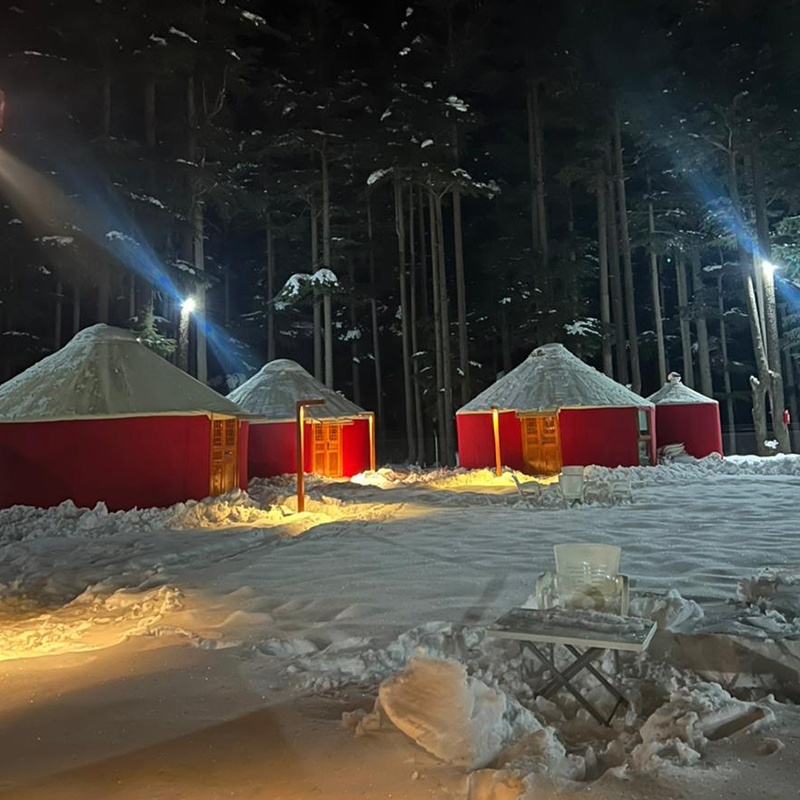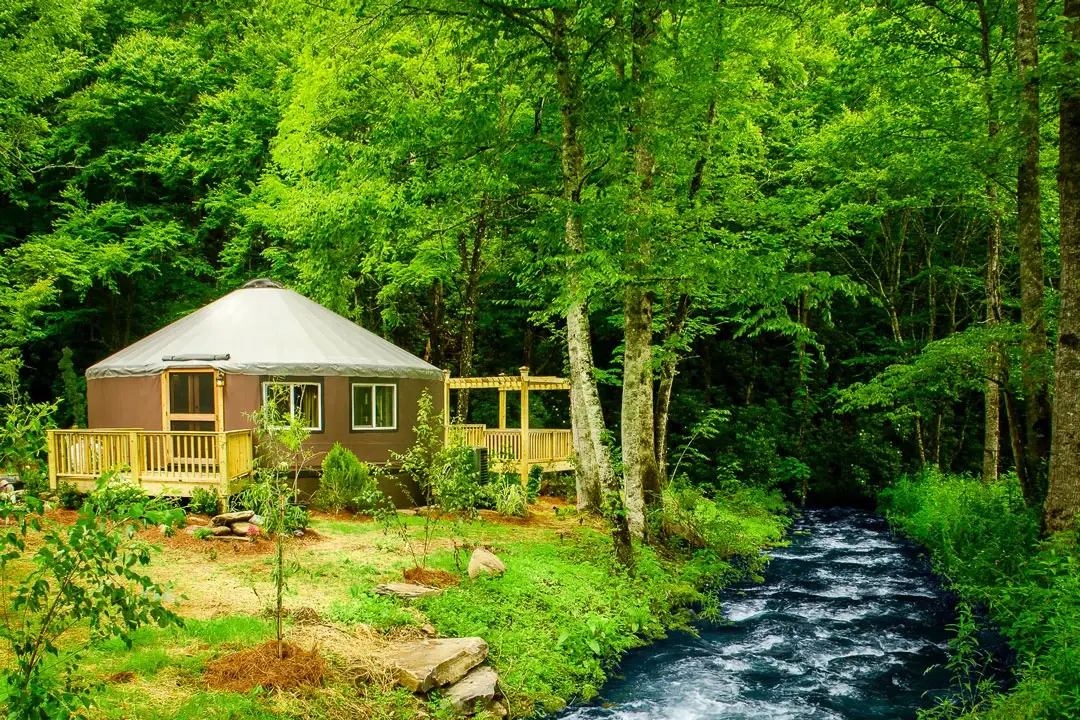Imagine a dwelling that has withstood the icy winds of Siberia, the blazing sun of the Kazakh steppe, and snowstorms in the northern mountains.
A yurt is more than just a home — it’s a way of life, tested and refined through centuries.
In today’s world of climate change and growing demand for sustainable living, the yurt is proving its relevance once again — even in the diverse regions of Argentina.
You’ll be surprised how comfortable and energy-efficient a yurt can be in both extreme heat and cold.
It’s a home that works with nature, not against it.
A yurt is more than just a home — it’s a way of life, tested and refined through centuries.
In today’s world of climate change and growing demand for sustainable living, the yurt is proving its relevance once again — even in the diverse regions of Argentina.
You’ll be surprised how comfortable and energy-efficient a yurt can be in both extreme heat and cold.
It’s a home that works with nature, not against it.
Warm in winter. Cool in summer. How is that possible?
A yurt is not just a round tent. It’s an intelligent design developed over centuries by people living in extreme climates — from Siberia to Central Asia. Modern yurts combine this ancient knowledge with high-tech materials.
In winter: double insulation layers made of aluminized foam (10 mm each), a breathable inner cotton liner, and a sealed structure keep the warmth in — even at -10°C or colder. Many of our customers in Russia live comfortably in yurts at -25°C, using just a wood stove.
In summer: the central dome can be opened for ventilation, and raised walls allow airflow. The cotton liner breathes, and the PVC outer cover blocks the sun. The result: a cool interior even when it’s +35°C outside.
The round shape eliminates cold corners and ensures even temperature distribution. The modular structure allows extra insulation or ventilation depending on the season.
A yurt is not just a round tent. It’s an intelligent design developed over centuries by people living in extreme climates — from Siberia to Central Asia. Modern yurts combine this ancient knowledge with high-tech materials.
In winter: double insulation layers made of aluminized foam (10 mm each), a breathable inner cotton liner, and a sealed structure keep the warmth in — even at -10°C or colder. Many of our customers in Russia live comfortably in yurts at -25°C, using just a wood stove.
In summer: the central dome can be opened for ventilation, and raised walls allow airflow. The cotton liner breathes, and the PVC outer cover blocks the sun. The result: a cool interior even when it’s +35°C outside.
The round shape eliminates cold corners and ensures even temperature distribution. The modular structure allows extra insulation or ventilation depending on the season.

Debunking Myths
A yurt is not a tent.
Some people think it's fragile or temporary. In reality, it's a solid, year-round living structure.
Here are the most common doubts, answered:
A yurt is not a tent.
Some people think it's fragile or temporary. In reality, it's a solid, year-round living structure.
Here are the most common doubts, answered:
- “Does wind get through?” — No. Our yurts have 3 layers: waterproof PVC, double thermal insulation (10 mm each), and a breathable cotton interior.
- “Is it too hot in summer?” — Not if properly ventilated. The dome opens, allowing airflow, and the cover provides shade.
- “Can it handle storms?” — Yes. Yurts have survived for centuries in the steppes of Asia. Our versions are reinforced and anchored securely.
- “Is it just temporary?” — Not at all. They’re relocatable but fully livable long-term. Durable and weather-resistant.

Construction Features
The yurt is a result of centuries of evolution, improved with modern materials.
Frame:
Insulation & Covers:
Dome:
The yurt is a result of centuries of evolution, improved with modern materials.
Frame:
- Built with kiln-dried pine or equivalent strong wood.
- Includes collapsible lattice walls, roof poles, and a central ring.
- Flexible and resilient to strong winds.
Insulation & Covers:
- Outer cover: 650 g/m² PVC, waterproof and UV-resistant.
- Thermal layer: two sheets of aluminized foam (10 mm each).
- Interior lining: breathable cotton or linen for comfort and style.
Dome:
- Acrylic, openable for airflow.
- Allows natural light inside, creating a cozy space.
- No foundation needed.
- Can be installed on a wooden platform.
- Assembles and disassembles easily, no heavy machinery required.

How the Yurt Handles Extreme Heat
The modern yurt performs remarkably well in hot climates due to smart design and materials.
Ventilation
Solar protection
Rapid nighttime cooling
Real-world use
The modern yurt performs remarkably well in hot climates due to smart design and materials.
Ventilation
- The openable dome efficiently releases hot air.
- Breathable cotton or linen interior helps natural air flow.
- Optional extra windows can improve ventilation.
Solar protection
- Light-colored PVC reflects sunlight.
- Aluminized insulation blocks heat from entering.
Rapid nighttime cooling
- The structure quickly loses stored heat after sunset.
- Opening the dome and door controls the internal climate easily.
Real-world use
- Yurts have been used in Central Asia’s arid regions for centuries.
- In Argentina, they’re already being used in hot areas like Mendoza with great results.

The Yurt in Cold Climates
Modern yurts perform well even in very cold environments, thanks to excellent insulation.
Thermal insulation
Fast and efficient heating
Real-world examples
Modern yurts perform well even in very cold environments, thanks to excellent insulation.
Thermal insulation
- Two layers of aluminized foam insulation (2 x 10 mm).
- Inner layer of thick cotton or linen for extra comfort and protection.
- Keeps warmth inside and blocks the cold outside.
Fast and efficient heating
- Round shape ensures even heat distribution.
- A small wood stove or gas heater is enough for 6–9 m yurts.
- Heats up in 15–20 minutes and retains warmth efficiently.
Real-world examples
- Yurts are inhabited in Russia and Kazakhstan at –20 °C or lower.
- In Argentina, yurts in Patagonia are used year-round, even in winter tourism.

Why Choose a Yurt?
As climates become more extreme and people seek efficient and sustainable housing, the yurt stands out as a smart alternative.
Eco-friendly and energy-efficient
- Natural materials, low carbon footprint.
- Great insulation and passive ventilation.
Versatility
- Perfect as a home, yoga space, studio, tourist lodging, or glamping unit.
- Suitable for year-round use.
Cost-effective
- 2–3 times cheaper than traditional buildings.
- Requires no foundation and is often considered a temporary structure.
Emotional appeal
- Warm, calming, and close to nature.
- Memorable experience for owners and guests alike.